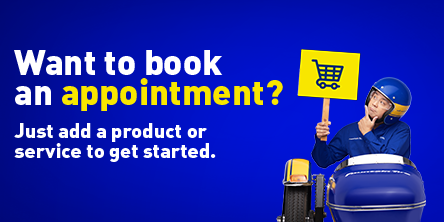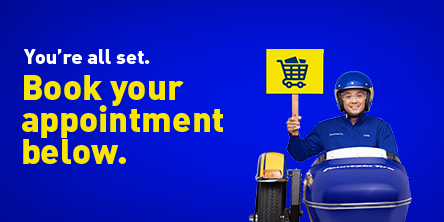QUESTIONS ABOUT TIRES
There are three key pieces of information in the numbers moulded in the sidewall of your tire. We’ve broken down an example tire number of P215/65R15 89H below so that you can more easily understand the numbers on your tire and find the right replacement for your vehicle.
Tire Size:
"P" indicates that this tire is made specifically for a passenger car, minivan, CUV, or SUV.
"215" indicates the tire width in millimetres from sidewall to sidewall.
"65" indicates this tire’s percent ratio of height to width.
"R" stands for Radial - the type of tire construction of nearly every tire on the market.
"15" indicates your rim diameter in inches.
Your vehicle is built and tested based on the manufacturer’s recommendation for tire size. Choosing a different tire size may affect your vehicle’s overall performance and durability.
Weight Rating::
"89" indicates the maximum weight this tire can carry: 580 kg (1,279 lbs). This is not a number you need to be concerned with when purchasing tires, unless you're pulling or carrying heavy loads.
Speed Rating:
"H" indicates the maximum speed at which this tire can drive: 210 km/h. Your vehicle’s tires should be the same or greater than the manufacturer’s recommendations.
Please contact your local Fountain Tire store if you have additional questions about the information written on your tires.
Use the search tires tool by entering your vehicle information; this will allow you to search for tires that fit your vehicle. From the search results page, you can view a quote for any of the tire options. This will include all associated costs including wheel balancing, installation, and taxes.
We always recommend checking your current tire size.
Proper inflation means great savings:
Regular tire maintenance can lower your fuel costs and help protect the environment. Make sure to keep an eye on your air pressure (or PSI) to be sure your tires are inflated to the right amount.
Under-Inflated Tires:
"Soft" tires make your vehicle work harder. Under-inflation causes excessive sidewall flexing, which reduces not only your vehicle’s carrying capacity but your fuel economy too. If you notice excessive shoulder wear, where the sidewall meets the tread of the tire, it could be a sign of under-inflation.
Over-Inflated Tires:
Over-inflation causes the centre of the tire tread to bear most of your vehicle's weight. This leads to faster and more irregular tread wear and loss of traction, causing you to have to repair or replace your tires sooner than expected. This can be avoided by inspecting your tires regularly for signs of wear at the centre of the tread to make sure they're not over-inflated.
Checking your Tire Pressure:
In one month, a tire can lose quite a bit of air pressure. Check your tire pressure at least twice a month. Air pressure increases with heat, so be sure to measure it before driving, while the tires are still cold. When the weather gets cold, check your tires outside to get the most accurate reading. If you store your vehicle in a heated garage and check the pressure inside, your air pressure reading could be up to 25% higher than the actual pressure. Refer to your owner’s manual to determine how much pressure (or PSI) your tires need, and use a tire gauge to get an accurate reading.
The Benefits of Nitrogen:
At Fountain Tire, we offer nitrogen to inflate your tires. Here's why:
Nitrogen makes up 78% of air. In its purest form, this non-flammable gas can be used for tire inflation without negative environmental impacts.
Air-filled tires lose 1 to 2 pounds per square inch (PSI) of pressure every month. Since a nitrogen molecule is larger than oxygen, it will not seep out as quickly.
Air-filled tires also have more moisture, which contributes to a loss of up to 2 PSI for every 5 degree Celsius drop. Using nitrogen helps prevent this loss because it reduces the amount of water vapour in the tire.
Please contact your local Fountain Tire store to help you inflate your tires.
Tires wear out over time. Differences in speed, road conditions, inflation, vehicle maintenance, your driving habits, and temperature make it hard to predict exactly how long your tires will last. We recommend inspecting your tires regularly and replace them when they are worn down.
Here are three ways to measure your tread:
-
Tread Depth Gauge
You can check this yourself with an inexpensive tread depth gauge, available at most auto supply stores. You’ll know to replace your all-season and all-weather tires when there is just 1.6-mm (2/32-inch) tread depth remaining. Winter Tires need a deeper tread to keep traction in the snow. We recommend replacing them when there is just 3.2 mm (4/32 inch) remaining. -
The Tire Wear Bars
Tires are manufactured with wear bars that indicate when there is less than 1.6 mm (2/32 inch) of tread depth remaining. When the tread is worn down to the point where you can see a solid bar of rubber across the width of the tread, it’s time to replace your tires. -
The Dime Test
The Rubber Association of Canada suggests this simple test to measure the tread depth on your tires. Place a dime upside down, with the tail of the dime facing you. If you can see the top of the sails of the famous East Coast racing schooner, it is time to replace the tire.
Please contact your local Fountain Tire store to help you maintain your tires.
Did you know that each tire on your vehicle has to support a different weight? This unequal weight distribution causes your tires to wear down at different rates. By rotating your tires, you can extend the life of your tires. Check your vehicle owner’s manual for rotation recommendations. If no rotation period is specified, a good rule of thumb is to rotate your tires every 10,000 kilometres.
If you're in need of a tire rotation, contact your local Fountain Tire store for a helping hand.
Tread Region: The ""flat"" area of the tire that you drive on. The construction of the tread will determine the grip of the tire in different weather conditions. It will affect your speed, acceleration, braking, and cornering.
Shoulder and Sidewall Region: The vertical side of the tire that extends from the road surface to the rim. The construction of the sidewall affects the ride and handling of the tire. A stiff sidewall provides quick steering response, while a softer sidewall flexes to provide a smoother ride.
Please contact your local Fountain Tire store to help you find the right tires.
If you notice any of these signs on your tires, it means your tires may not be wearing properly:
- Sawtooth appearance on the edges
- Faster wear on the outer edges than in the middle
- Quicker wear of front or rear tires on front-wheel drive vehicles
- Tire wears excessively on one side
- Cups or dips in the tread
There are a number of causes for tire-wear problems, including:
- Your tires are not properly inflated or balanced
- Your vehicle is misaligned
- The shocks on your vehicle are weak
- Your vehicle has loose front-end parts
Our professionally trained Fountain Tire associates can diagnose and address any tire issues you may have.
If you have any concerns about your tires, suspension, or alignment, give your local Fountain Tire store a shout.
Tires with different size designations, constructions, and amounts of wear may affect vehicle handling and stability. For best all-around performance, we don't recommend mixing sizes and types of tires on a vehicle. It would negatively affect the handling characteristics of the vehicle. With winter tires in particular, Transport Canada recommends that tires get changed in sets of four only. Why? Simple: it’s safer. That’s why we’ve made it our policy. For more information, view our Winter Tire Policy.
Need help finding the right tires? We've got you covered. Just contact your local Fountain Tire store and we'll help you out.
A wheel alignment service is not necessarily needed when new tires are installed. We recommend getting a wheel alignment on an annual basis or whenever the vehicle shows signs of tire damage or steering pull. Regular wheel alignments are critical when it comes to looking after your tires.
For our complete guide on how to buy winter tires, visit our Winter Tires page. For more information on all-weather tires vs. all-season tires, click here.
{{showWheelsRims ? 'SEASONAL TIRE CHANGE' : 'NEW TIRE INSTALLATION'}}

Are your tires on wheels/rims? *
Required FieldWill you be storing your tires with us? *
Required FieldAre your tires already stored at the {{branch.branchName}} store? *
Required FieldAdditional Comment

SLOW LEAK AND/OR FLAT REPAIR

Which tire is losing air or flat?
 Front
Front




{{getSelectedTires()}}
Booking In Process

You currently have an appointment booking in process. If you make changes to your cart now your booking will be cancelled.
Booking Cart Cleared
As our products and servicess vary by store, we have cleared your booking cart. Please re-select the items for your appointment.
You need to select a store in order to obtain an accurate quote
Oops!
Something happened, please try again..No Locations Found
Please try your search again.
{{location.branchName}}
{{location.address}} {{location.city}}, {{location.province}}, {{location.postalCode}}
(Mobile Truck)
Thank you for requesting a quote.
{{branch.fullAddress}}
You need to select a store in order to obtain an accurate quote
Oops!
Something happened, please try again..No Locations Found
Please try your search again.
{{location.branchName}}
{{location.address}} {{location.city}}, {{location.province}}, {{location.postalCode}}
(Mobile Truck)
Thank you for requesting a quote.
{{branch.fullAddress}}
A set of tires is currently in your cart. Would you like to replace it?



A set of wheels is currently in your cart. Would you like to replace it?

Please Confirm Your Vehicle Details
Vehicle and Product Mismatch

The tires selected {{validationResult.tireSize}} do not match the manufacturer’s recommendation.
You can contact the store if you are unsure if the selected tire size is the right fit for your vehicle.
The wheels selected, {{validationResult.wheelSize}}, does not match per the vehicle manufacturer recommendation.
Putting on incorrect wheel size can be a real safety hazard or result in damaging the vehicle. It is recommended to put on wheels that matches the vehicle manufacturer.
You can contact the store, if you are unsure if the selected wheel size is the right fit for your vehicle.
The tires selected, {{validationResult.tireSize}}, and wheels selected, {{validationResult.wheelSize}}, do not match per the vehicle manufacturer recommendation.
Putting on incorrect tire/wheel size can be a real safety hazard or result in damaging the vehicle. It is recommended to put on tires/wheels that matches the vehicle manufacturer.
You can contact the store, if you are unsure if the selected wheel size is the right fit for your vehicle.




